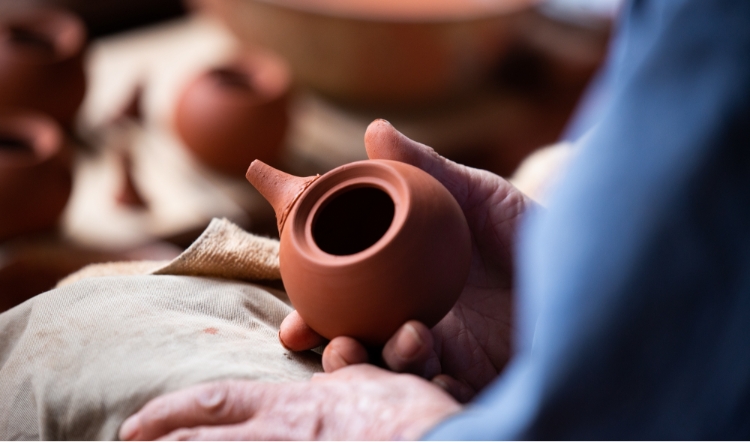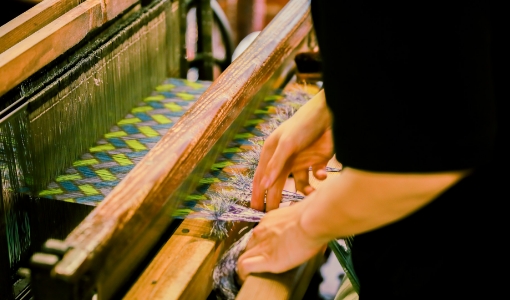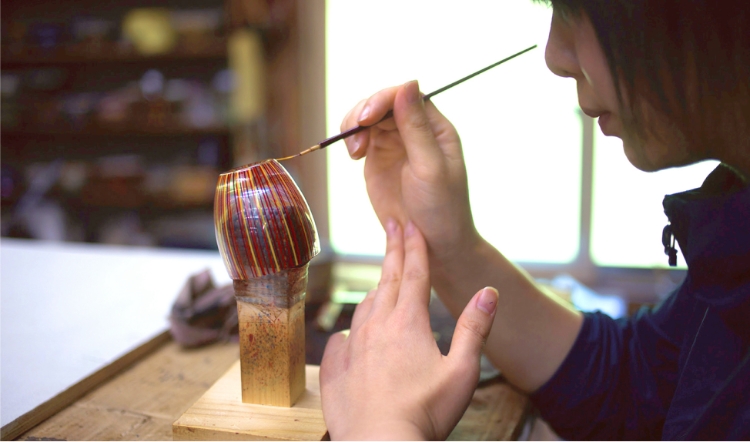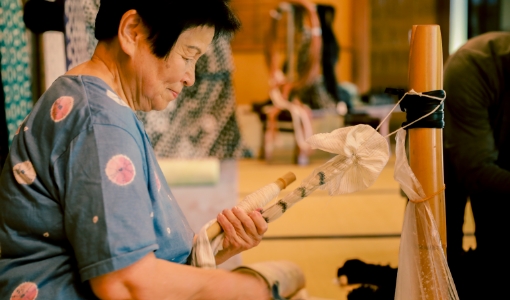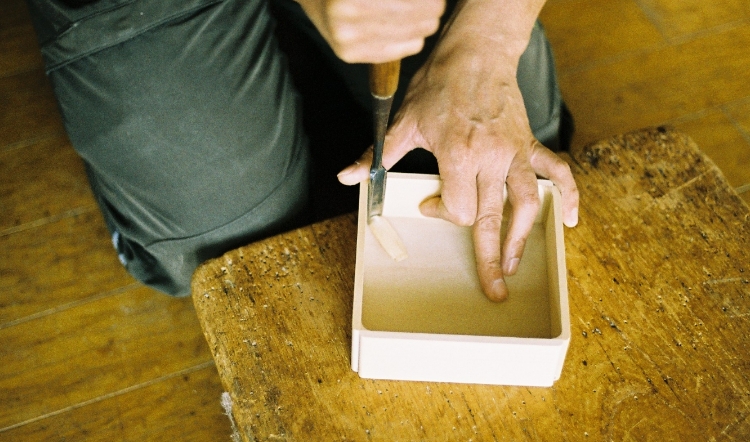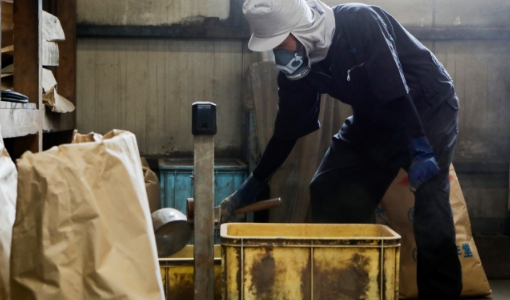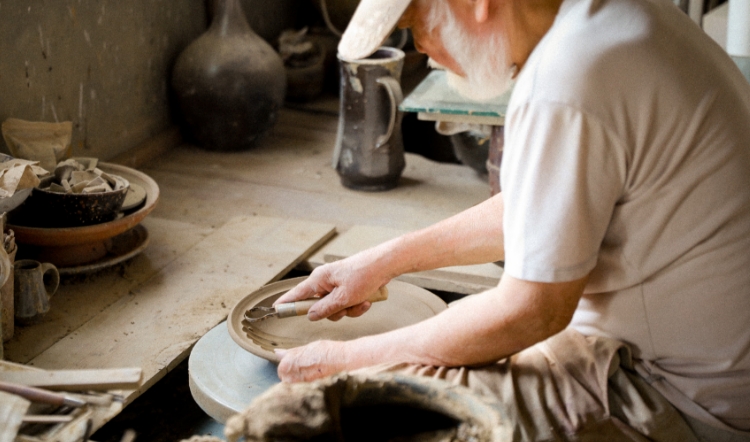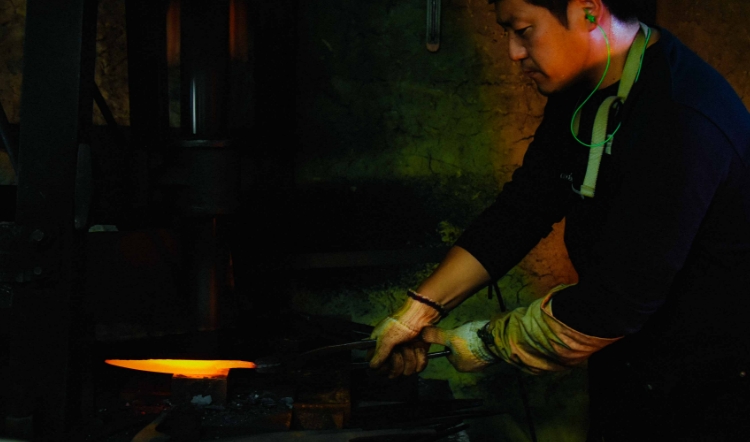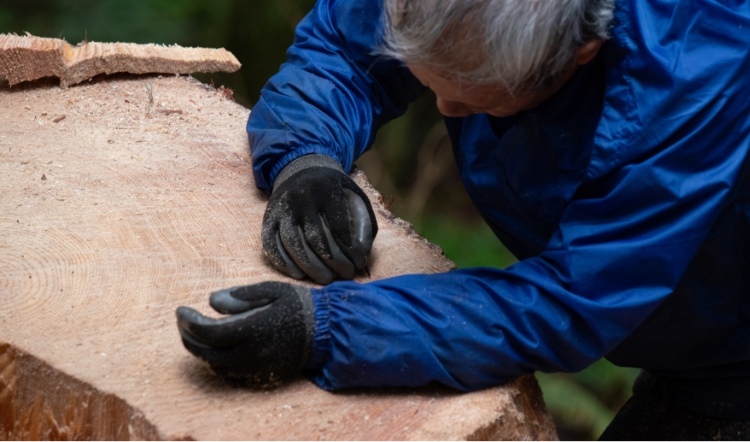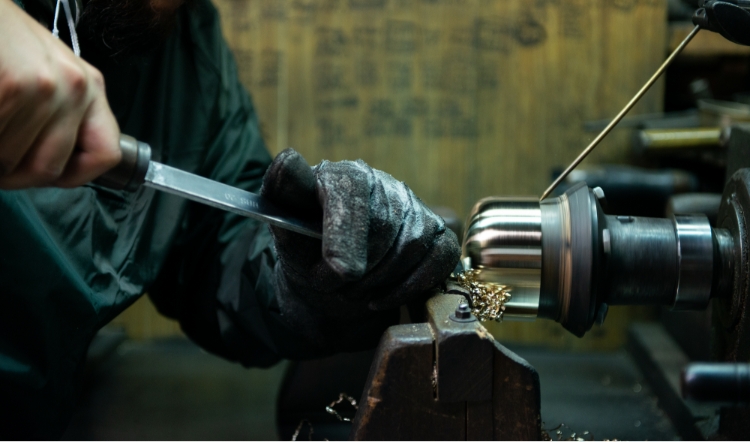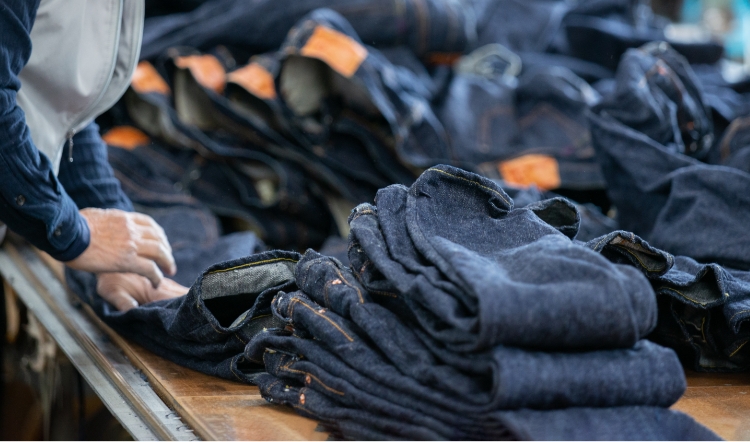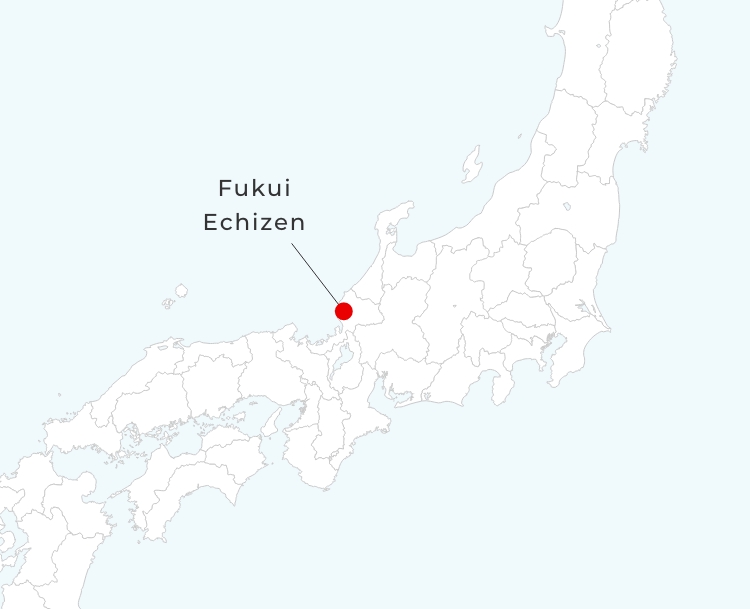
The Kawada area of Sabae City, Fukui Prefecture, is surrounded by mountains on three sides and has a rich natural landscape. Many lacquer tree workers have lived there since ancient times, collecting the resin used in lacquer from the urushi tree.
Its history in lacquer-making dates back about 1,500 years. When Emperor Keitai (reign 507–531) directed lacquer masters to repair his damaged crown he praised the black lacquer bowl presented to him alongside the repaired crown, which boosted lacquerware production. Over time, this region grew into a major center for lacquerware craftsmanship.
At the end of the Edo period, “maru-mono (round ware)” lacquerware made from a single piece of wood turned on a lathe was predominant. However, the adoption of a new method involving the assembly of wooden sections, “kaku-mono (square ware)” lacquerware, and new decoration techniques, such as “maki-e (precious metal powder decoration)”, “chinkin (gold inlay decoration)”, gave both strength and beauty to pieces, the craft became renowned throughout Japan.
Echizen lacquerware was one of the first crafts to adopt a division of labor system to upscale production, with craftspeople specializing in each step of the process:「kiji / woodwork」「nuri / lacquering 」 and 「kashoku / decoration」.
Continuous refinement of techniques over time has created durable lacquerware that can even withstand dishwashers, aligning with everyday life.
In Japan’s oldest lacquerware region, you can experience the depth and history of lacquerware, integral to daily life, while witnessing the artisans’ skills firsthand. You will also have the opportunity to get involved in some of the craftsmanship processes of making a photo frame to take home.

Click the button to link to an external site dedicated to inquiries.

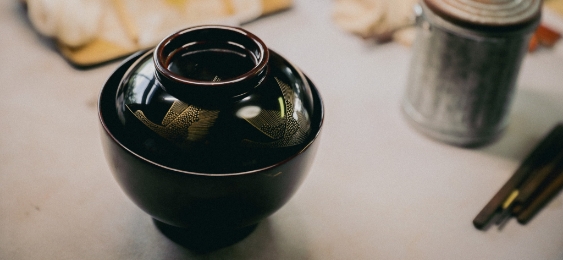
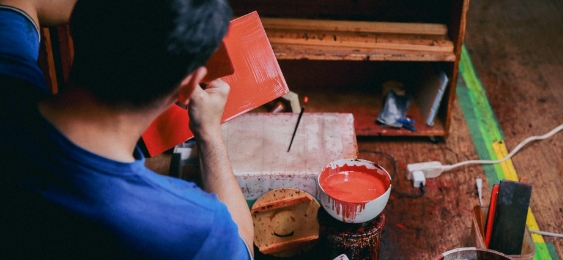

With their 1,500-year history, the craftspeople of Sabae City in Fukui Prefecture, Japan's oldest lacquerware-producing region, have continually embraced new challenges—preserving tradition while introducing new techniques and establishing a specialized division of labor. On this tour you will visit a series of workshops that specialize in the different steps of lacquerware making, from「woodwork」「lacquering」 to 「decorating」with an opportunity to make your own frame with chinkin techniques, guided by skilled makers.
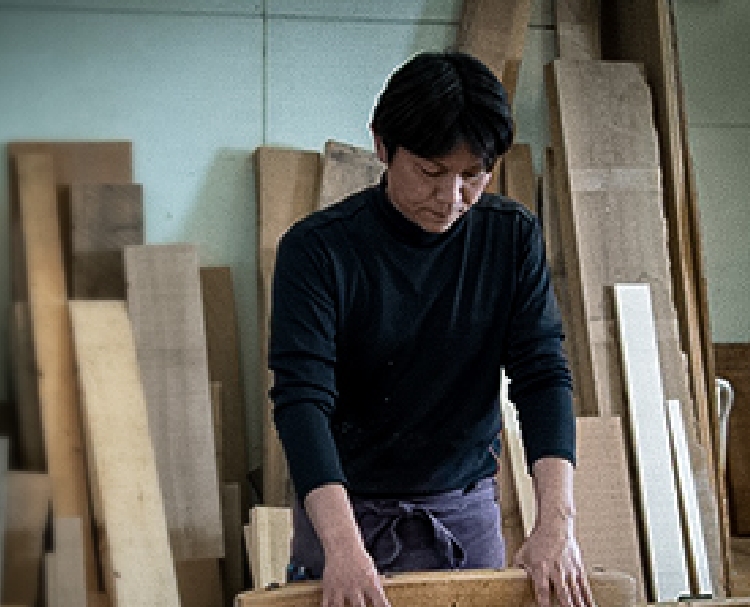

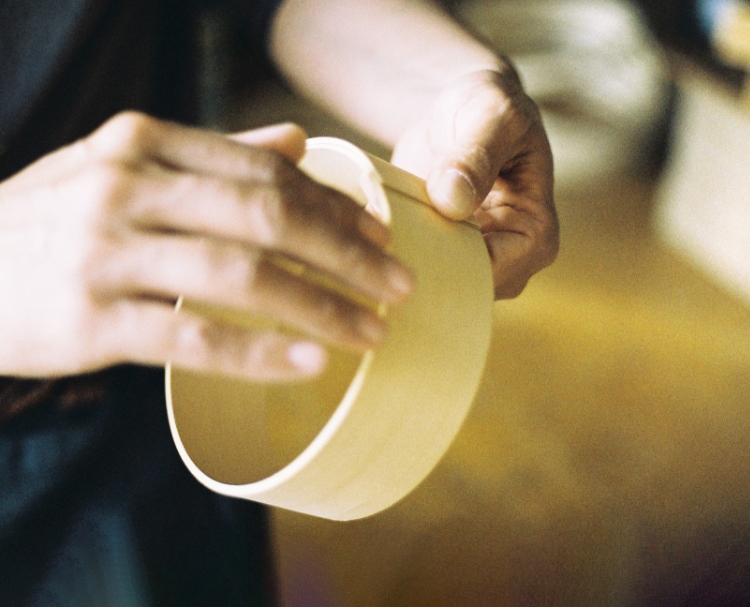
Second-generation "kiji-shi (woodworker)” at Inoue Tokumokko. While inheriting the traditional shapes and techniques of Echizen lacquerware, known as karu-mono, to make small boxes and trays, he also incorporates “mage-wappa (bending techniques)” to create a wide range of other wooden products. In traditional lacquerware, the woodworker’s craftsmanship is hidden beneath several layers of lacquer decoration. However, Mr. Inoue celebrates the intrinsic natural beauty of wood with the production of his independent brand「 Lr」.






Second-generation “nuri-shi (Japanese lacquer craftsperson)”, Yamagishi Urushi Studio. Mr. Yamagishi is a craftsperson who primarily specializes in hand-painted lacquer finishes on wooden items, particularly kaku-mono but also maru-mono, such as bowls. He has developed a painting technique that intentionally leaves visible brush strokes, giving texture and warmth, imbuing pieces with a strong tactile quality while considering their intended use.



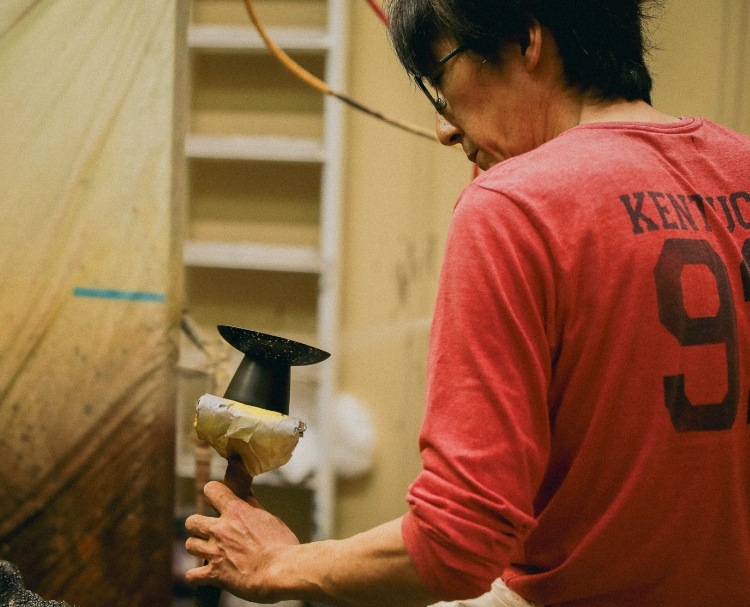
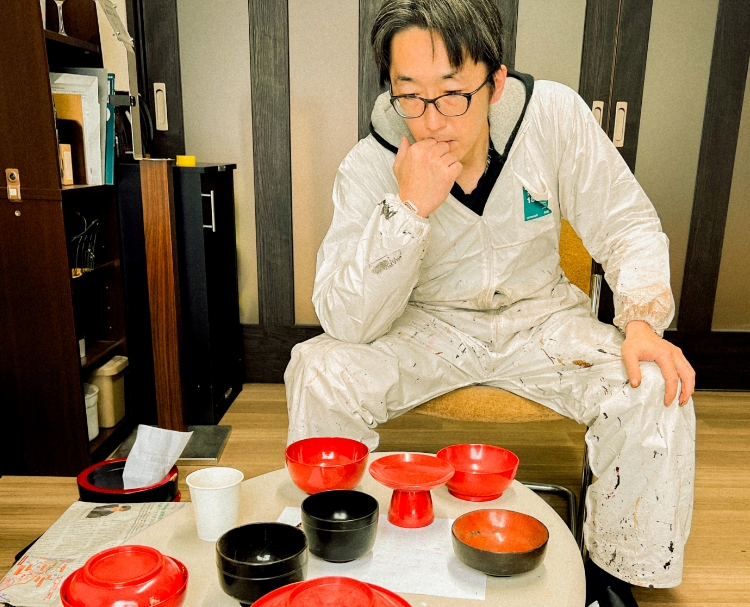

Since its foundation in 1983, the company has been primarily engaged with spray painting wooden products, continually exploring new finishes and pushing the boundaries of painted surfaces. In 2018 they launched project MARUHIRO SPRAY, in which deadstock lacquerware and wooden objects are revitalized through their spray painting techniques.






After training under the Wajima chinkin master, Goichi Mitani, Mr.Tomita apprenticed under his father, Nobuyuki Tomita (first-generation owner of Tateyama), and became the second-generation owner-maker. He is one of the few Chinkin-masters skilled in both the dot carving technique, characteristic of Wajima lacquerware, and the line carving technique, characteristic of Echizen lacquerware. He explores new forms of chinkin, applying the techniques to various materials such as ceramics and acrylics.




Click the button to link to an external site dedicated to inquiries.
